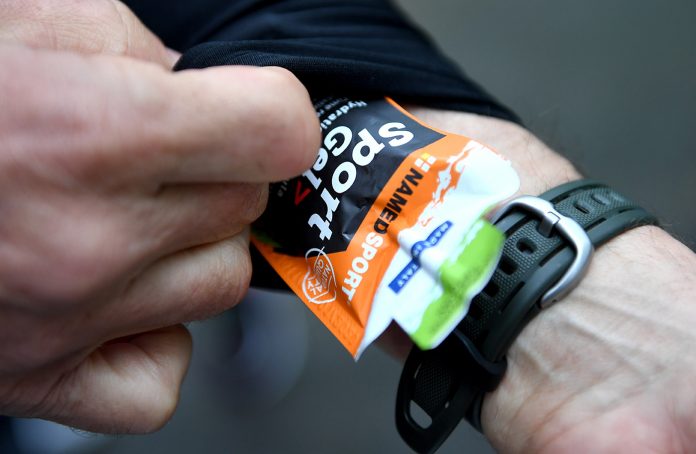By: Dr. Luca Simoni. Biologist Nutritionist and teacher at “Sanis” school for Nutrition and Integration in Sports.
The marathon evokes something epic, and mythical, it’s the queen of the running races. Because of its length and the prolonged physical effort it requires, you need to have a strategy that includes every little detail: from practice to diet, also including the metal approach. Let’s see how to deal with:
- The week before the race
- Breakfast, nutrition before the beginning of the race
- Approaching of the race
- During the race: nutrition and hydration
- The final phase of the race
- Recovery, essential to restore our body
The week before the race
Like any other marathon, the Milanese one is 42 kilometer and 195 meters long, but each runner has very different performance times, based on their training and abilities. That’s why it is impossible to generalize, but we should still keep some tips in mind.
Let’s start from the days immediately before the race: the calorie intake of the diet, which should always be balances, is slightly pending towards carbohydrates. However, it is necessary to pay attention to the so-called “Carboloading”, a practice already widespread during the sixties, aimed to increase the glycogen reserves to generate significant advantages:
- improves the duration of the training;
- optimizes the performance;
- decreases the perception fo fatigue.
Traditionally this practice had two phases, one to reduce and the other to refuel. However, today, to avoid a series of undesirable effects, the practice is to gradually increase the carbohydrates load in the last few days without exceeding, so that on the day of the race the glycogen’s reserves are full.
The diet must remain balanced, and ensure adeguate intake of macronutrients.
Breakfast, nutrition before the beginning of the race
A restful night is what a runner needs, and the best way to start the day is with a good breakfast: it’s wise to eat one meal at least three hours before starting; but regardless of the timing, there is more freedom in choosing what to eat. From cereals to muesli, from oats to toast bread with jam, fresh or dried fruits, everyone can follow their own taste: the important thing is to ensure a good amount of carbs and fat, better if a bit quicker like coconut oil. Do not forget a source of proteins, that can vary as long as it is easily digested and well tolerated: in this case protein supplements can come handy like the isolated whey proteins or the essential amino acids, which guarantee high digestibility and excellent absorption kinetics. In this case, the choice should favor high quality ingredients, staying away from cheap prices.
Approaching of the race
Whatever breakfast you choose, in order not to run the risk of weighing down and thus compromise the race. It’s better to use what is technically called “waiting ration”, a small meal consumed no later than 60 minutes from the starting: gels or energy bars with fruits and carbohydrates sources with different metabolic rates are great tools, tasty and convenient to carry.
During the race: nutrition and hydration
Let’s now talk about hydration: the concept that availability of water is key, is not new, water is needed both for the metabolic activity, and for the performance, but even if this concept is considered as assimilated, we still see performance’s drops due to dehydration. Here are some practical tips: sipping 500 ml of water in the 2 hours before the race can be a good strategy without side effects. However, be careful: personal traits and the environment in which you are running, are variables that must be taken into consideration, just think of the difference between running at 18° and at 30°.
As per hydration, guide lines suggest to drink small quantities often during the race, taking advantage of the rest points placed by the organization every 5 km, in order to replenish with H2O, or even better with a hypotonic solution based on carbohydrates and mineralsthat hydrates better and extend the performance time. A suggestion: the minerals to be used should be tested before the race, and they should include sodium and chlorine, the main ingredients both in blood and in sweat; the presence of magnesium and potassium, which are still needed, is often secondary. It is also important to remember to drink even if not thirsty. The sensation of thirst comes when dehydration is already in progress.
Let’s now talk about how to eat, remembering that from the metabolic point of view, the approach to efforts up to 2 hours is very different from the one of longer efforts. A versatile nutritional strategy that can be used by many athletes, needs to be built based on the time and not the distance; the running times vary significantly from subject to subject, and suggest a replenishment after 15 minutes means to have the athlete eat in a range that goes from 45 minutes for the top runners, to an hour and 30 minutes for the beginners, which is very different.
Keeping in mind the high individual variability which belongs to different athletes, a suggestion that applies to almost everybody is for sure to eat every 45 minutes.
Once we established the refueling frequency, our energy strategy needs to be completed with choosing what to eat, and during the race the sources that can guarantee a good coverage are mainly carbohydrates in form of gels or bars, and eventually dried fruit. Let’s start from the gels: it’s a particularly easy tool to be carried around, and it is a good energy source, but it needs some “directions” to avoid any inconvenience.
It is recommended to follow the gel intake with a good sip of water in order to avoid annoying intestinal discomfort that could diminish the performance, but it’s not always easy to have H2O available: hence, choosing an isotonic gel that can be taken without water, is always the best choice. Alternatively, for those who can’t give up solids, there are bars that must however ensure high digestibility during the race. In this sense, fruit puree or dehydrated fruit are preferred to other types, and are generally very well tolerated and have an excellent energy release.
The final phase of the race
A good race strategy can also include the use of caffeine: the studies are all positive, although in some subjects it is poorly tolerated. The effect is twofold: on the one hand it reduces the perception of effort and increases lucidity; on the other it promotes muscle contraction and cardiac output. The use of caffeine such as or through a natural source such as guaranà, which contains 3-5% of caffeine, is particularly indicated in the last phase of the race to counteract mental fatigue that characterizes these kilometers. Also, with regard to the energy aspect, the same rule already mentioned for hydration applies, that is to follow only consolidated strategies, meaning gels or bars already tested in training.
Recovery, essential to restore our body
The race is over and another very important phase starts from the physiological point of view: recovery The guidelines to optimize this phase are clear and indicate the need to take a good amount of carbohydrates with a high glycemic index to allow the rapid restoration of spent glycogen and a protein source. It is especially good to provide to “recharge” the energy within half an hour from the end of the activity, since the body tends to restore carbohydrate within this time. It is not always easy to quickly recover when you need it, for this reason resorting to well-balanced single doses to take post workout can be a solution. A help for choosing is to remember that they must be first and foremost rich in carbohydrates, glucose, maltodextrin and branched cyclic dextrins; and secondly they must provide good quantities of proteins or essential amino acids;special attention to the presence of leucine or its metabolite HMB (hydroxymethylbutyrate), particularly appreciated for its ability to significantly activate the recovery path.
But the recovery after exercise lasts for a particularly long time, also in relation to the specific conditioning of the individual, and such recovery must be supported by balanced meals, carbohydrates and proteins without forgetting fats, c, which appear to be the preferred energy source in the so-called post-operational oxygen consumption (EPOC). Pasta or rice with olive oil and other condiments, combined with Grana cheese and other protein sources, are sufficient. Instead, pay attention to the consumption of alcohol that slows the recovery phase, and the lactic acid metabolism and can promote inflammatory states.














